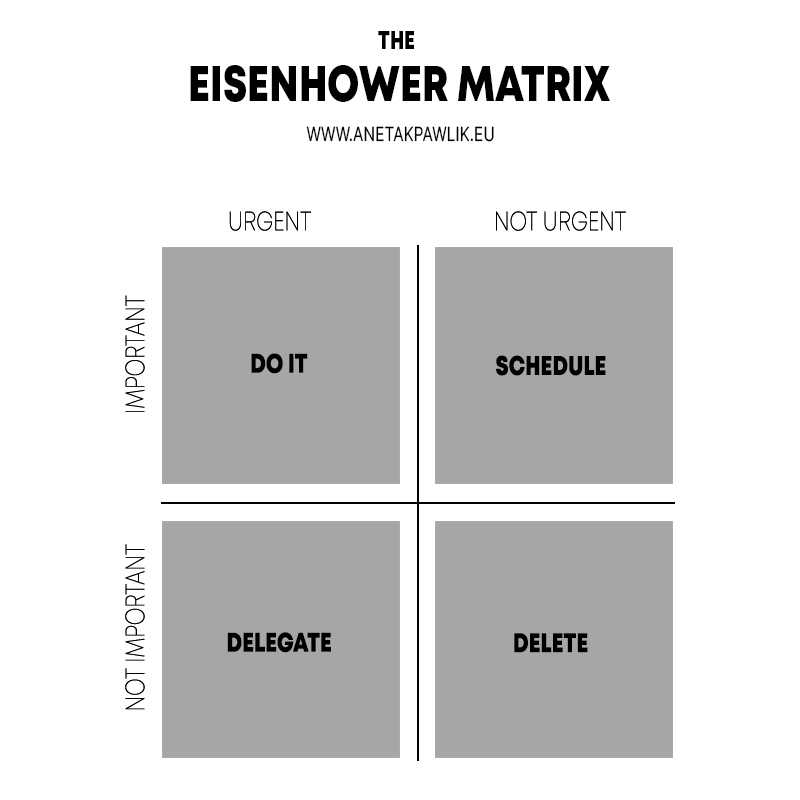So maybe you’re not the best at sticking to deadlines and quickly ticking things off your To-do list.
You often look at your colleagues in silent awe as they report back on how much they have achieved.
And even when you manage to board the “planning” train, there is something that derails your journey.
By all accounts, you just weren’t born a planner.
*I whoosh in out of nowhere *
You are wrong.
*I stomp my foot for emphasis*
What if I told you that nobody had the innate ability to plan for success?
I can help you become a time management master by correcting the five most common mistakes of effective planning in the time it takes you to read this blog post.
Yes, it sounds like I am about to serve you a magic potion which will permanently banish procrastination but to be honest, effective planning has very little to do with finding the cure for laziness and everything to do with learning how to plan properly.
In fact, good planners account for downtime and schedule a little bit of nothing-doingness because it’s healthy to take a break.
Ready for the big reveal? Here we go.
#1 You Don’t Know How To Prioritize
The art of prioritizing is simply a realistic evaluation. You are measuring what needs to be done against the tasks’ level of importance. To keep it simple, the most important task goes on top. But sometimes, it is hard to discern which task is actually ‘most important.’
There is a swanky chart that I read about in The Decision Book: Fifty Models for Strategic Thinking (name checks out). It’s called the Eisenhower Matrix, sometimes called the “Eisenhower Method”, “Eisenhower Principle”, or the “Urgent-Important Matrix”.
If the name sounds familiar, it’s because it’s named after the 34th president of the United States, Dwight D. Eisenhower (in office January 20, 1953 – January 20, 1961).
He was (apparently) known for his ability to prioritise and maintain peak productivity throughout his busy schedule:
“He stabilized, and did not escalate, the Soviet–American rivalry. He strengthened European alliances while withdrawing support from European colonialism. He rescued the Republican Party from isolationism and McCarthyism. He maintained prosperity, balanced the budget, promoted technological innovation, facilitated (if reluctantly) the civil rights movement and warned, in the most memorable farewell address since Washington’s, of a “military–industrial complex” that could endanger the nation’s liberties.” (Source: Wikipedia’s entry on Dwight D. Eisenhower)
The Eisenhower Matrix came to be after the following quote went public, with the media mistakenly attributing it to the President.
“I have two kinds of problems: the urgent and the important. The urgent are not important, and the important are never urgent.”
A quote by an unnamed “former college president” that was paraphrased later by Eisenhower and incorrectly attributed to him afterwards. Some of the articles I read name J. Roscoe Miller as the author of the quote. Source: Quote Investigator
I could not find the exact origin story of when the matrix was mentioned for the first time. But one is for sure: it’s entered the modern productivity vernacular thanks to Stephen Covey, who wrote about it in his best-selling book, The 7 Habits of Highly Effective People (which is a great book, by the way!).
The Eisenhower method is incredibly straightforward: you write up all the tasks you have and then divide them between the four boxes.
Important and not important tasks – prioritise them.
Important but not urgent – schedule them for later once the top tasks are cleared.
Urgent but not important – delegate if possible. Yes, you can delegate to ChatGPT too.
Not urgent and not important – delete temporarily so you do not have to look at them until you have time and/or willingness to tackle them. I have a special list for these tasks that I call “floaters” – they can float in my Asana board until I am good and ready.

Download this printable black and white Eisenhower Matrix poster (A4, PDF).
Let’s talk specifics:
When you have a deadline set by the client, then this task is the most important because it’s an external deadline, and you get paid for your work.
When you have a paper to turn in, a newsletter to send, and pieces of reports to put together, these are important, but the sequence of work will be determined by delivery dates.
Essentially, all deadline-dependent activities should be in the important row, but whether or not they are urgent is to be decided based on when they are due.
It is also a good idea to get in the habit of having short to-do lists (daily and weekly ones), as well as to-do lists for the month or the year.
If you plan in advance, you will know how to chunk the bigger projects.
#2 Your Plate Is Too Full
Ambition is the driving force behind many actions. However, being overzealous can become problematic when you load your planner with too many tasks. Multi-tasking is a myth, and bloodshot eyes are not sexy.
But there is a reason we think we can have it all.
Remember that famous conversation about Beyoncé?
A former Love Islander and a popular British influencer, Molly-Mae Hague, has recently come under fire after making some pretty tone-deaf comments. While speaking on the podcast ‘Diary of a CEO’, she said:
Source: Stop Implying That We All Have the Same 24 Hours in a Day as Beyoncé by Katie Jgln
“Beyoncé has the same 24 hours in the day that we do, and I just think, like, you’re given one life, and it’s up to you what you do with it, you can literally go in any direction.“
Or Kim Kardashian’s “‘Nobody wants to work anymore”?
These are fairly recent, and many forget that the “work hard, play hard” philosophy has been packaged as the recipe for greatness by the Silicon Valley bros.
They will jog at 4 am, meditate for 1 hour, have freshly squeezed juice for breakfast, hop on a company call, fly in to New York for an interview, have late lunch with Bill Gates, release a new iPhone, and then get home in time to read to their kids in bed.
I welcome you to research “tech bro daily routine”. Side note: if you try to talk to me about biohacking, I will turn violent.
Where I am going with this:
A regular person will not have an army of people who will handle their chores so they can do their best at work, creating the next groundbreaking technology.
Most of us do not aspire to affect the course of history.
Hell, most of us, post-COVID and in these weird and violent times, just want to have a good day at work without taking the stress home.
I am first to stand up and say that I have a big problem with saying “yes” to too many projects at once and then spiralling out of control, fuelled by self-hatred and coffee. But as I get older, I understand that spreading myself too thin means I end up distracted, rushed, and unfulfilled.
This sense of needing to do a lot to be a valuable team member or partner had been artificially injected into my brain as I browsed through stories of success born out of backbreaking work.
What these stories do not tell is how important it is to focus on fewer things.
So, if you are feeling overwhelmed and see the quality of work you do drop because you are trying to hold onto too many things, I suggest you let go of some responsibilities.
#3 You Don’t Know Yourself
The golden rule of following through on your commitments is to be realistic.
Would you ever run a marathon without prior experience in running?
Would you apply for a CEO position straight out of university?
My point exactly.
Effective planning means knowing what you are capable of and how much work you need to put in to reap the benefits.
- Consider the time the entire task should take. Also, remember to set yourself a deadline; otherwise, you will fall into delays and procrastination!
- Consider how many stages the task has and how much work/time you need to spend on each task. For example, I need to take pictures for the blog post and edit them. I need to write the article, proofread it, and plan promotion.
It’s the simple things, the understanding of what goes into the task, that will help you see the bigger picture. This awareness will also help you avoid overscheduling.
#4 You’re Using The Wrong Tools For Planning
There is no such thing as “a bad way of planning” because each of us is different.
For some, it is a paper notepad; for others, Google Calendar is their go-to planner.
Ask yourself honestly if your organization method has been helpful.
Are your planning tools fulfilling all the functions, or are you still searching for your perfect planning method?
Without proper tools, you will find yourself with crumpled notes and To-do lists littering your desk. Or you will digitalise your plans but struggle without a physical tool.
Here, I also want to point out that the system you choose should not be time-consuming. You are not supposed to be adding “maintenance of my to-do list” to your to-do list.
#5 The Destination Is Not Exciting Enough
So you nailed down your tools and priorities and assessed the tasks, but something still isn’t working.
If success is still eluding you, then planning might not be your main problem.
The lingering problem, in this case, might be your goals.
Perhaps your goals are not thrilling enough for you to really go for them. That means it’s time to rethink your goals or include an incentive.
Maybe you are lost under a pile of work and don’t see the light at the end of the tunnel. Breaking down the task and adding progress monitoring to your To-do list might help. I guarantee you that seeing how much you have achieved will provide the perceived value of what you’re doing and spur you on.
As somebody smart once said, “‘Failing to plan is planning to fail”.
What they forgot to add is, “Failing to recognise the right way of planning makes the whole exercise pointless.” And you can quote me on this.
This article was originally written for the Impact Hub Vienna blog and published on the 15th of June, 2016. Access it online here.
